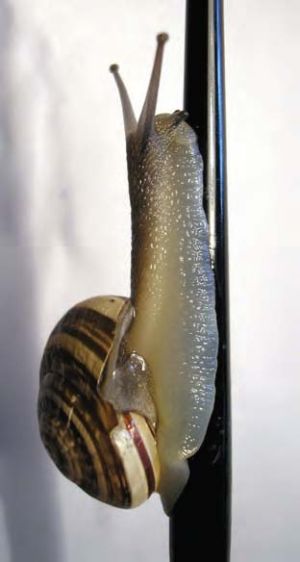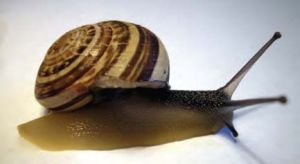|
A live specimen of this Mediterranean species was recently found by the author on Lewisham railway station, London, grid reference TQ 380 759, 22.iv.2006, on a wall behind the ticket office. The identification was kindly confirmed by Peter Morden of the Natural History Museum, London. It was an almost mature specimen at 21 mm maximum diameter, although lacking the thickened rim around the mouth of the shell. It appears that it was a one-off as no others were seen nearby. How it got there is unclear; perhaps it stowed away in someone's holiday luggage? Below is a reply to a letter I sent to DEFRA:
Dear Mr Notton Thank you for your e-mail of 26 May regarding a non-native snail (Eobania vermiculata) that you recently found. I have asked our scientific advisors about this species and they inform me that your sighting is possibly the first in the UK. It originates from Southern European and Mediterranean countries, but has been introduced into Australia, South Africa, Egypt, USA, Turkey and Germany. Introduction in these countries can most likely be attributed to escapes from the food trade, imported through agricultural harvest and the import of tiles from Italy (pallets having been stored in fields where the snail can hitchhike before import). It is difficult to know whether this species could establish itself in the UK and whether it could become a pest. However, it has no protection under UK or EU legislation and can therefore be controlled. In addition, the Wildlife and Countryside Act 1981 makes it an offence to release or allow to escape into the wild any animal that is not ordinarily resident. Therefore, anyone who released this species into the wild, or who did not take sufficient measures to prevent its escape, could face prosecution. Currently there is no central place to which sightings of non-native species can be directed, although you could report them to your local English Nature office or to this office in Defra. In the future, this role could be subsumed into the role of the Secretariat for the recently established Non-native Species Programme Board (a cross-government co-ordinating body for non-native species policy and action). I hope the above information is helpful, but if you have any further questions, please do not hesitate to contact me. Yours sincerely Tom Cadman, Species Policy Officer, Wildlife Species Conservation Division, Defra |
Fig 1 Eobania vermiculata (Photo David Notton)
Fig 2 Eobania vermiculata (Photo David Notton) |
Eobania vermiculata in the UK
Issue
11
Page
6


